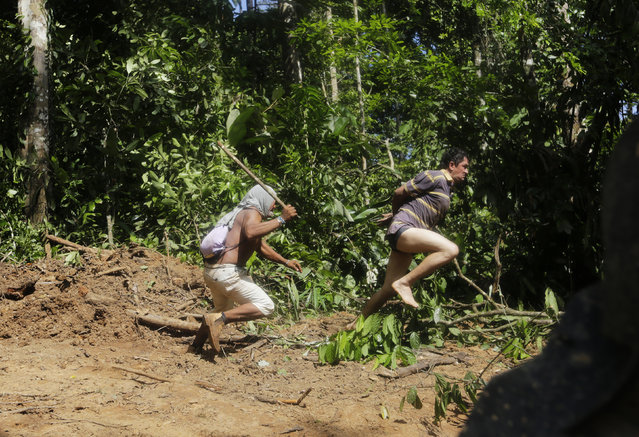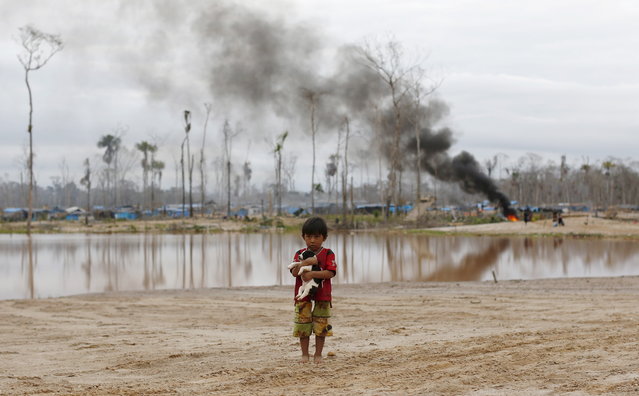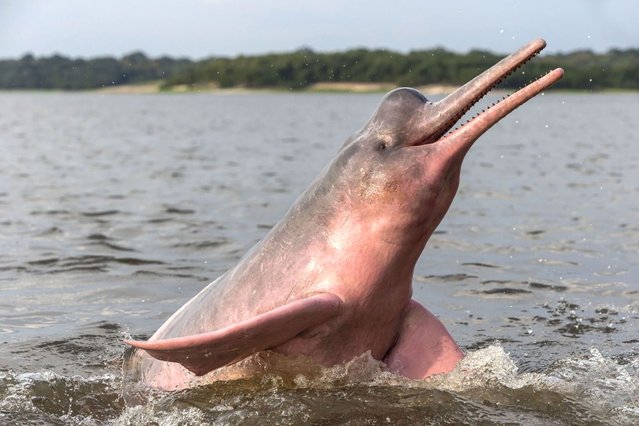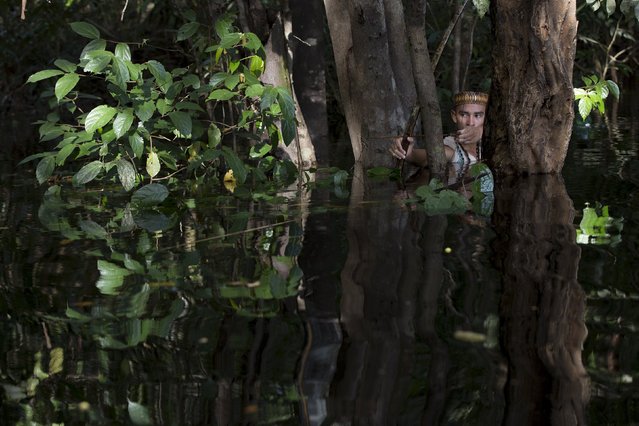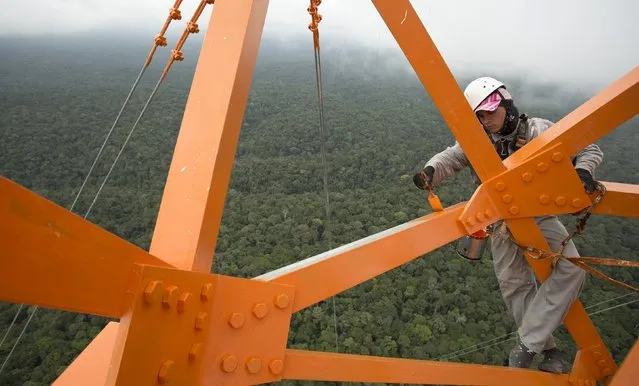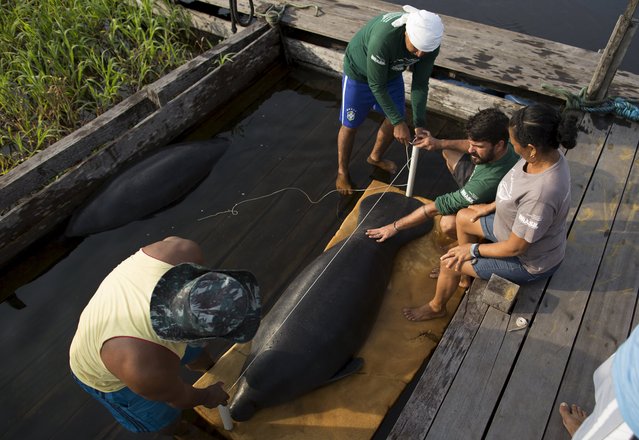
Veterinarian William Guerra Neto (2nd R) and an assistant take measurements of two Amazonian manatees who are being rehabilitated after sustaining injuries from hunting and fishing nets at the Center of Amazonian Manatees at Amana Lake in Maraa, Amazonas state, Brazil, September 21, 2015. (Photo by Bruno Kelly/Reuters)
30 Sep 2015 08:05:00,post received
0 comments

